History
This first-class royal temple dating from the Ayutthaya period was originally called Wat Photaram or, colloquially, Wat Pho. King Rama I had the whole
temple complex restored in 1788 and had Buddha images brought from deserted monasteries around the country to be installed in
the ubosot (ordination hall). The temple was renamed Wat Phra Chetuphon in 1801 and renovated again in the reign of King Rama
III. It is known as the birthplace of Thai traditional massage.
What to see
The temple grounds cover a large area with a variety of halls, chedis, cloisters and Buddha statues.
The impressive Reclining Buddha (Phra Phuttha Saiyat or Phra Non), depicting the Buddha's parinirvana (i.e. death of
an enlightened being), was constructed from plaster around a brick core and coated with gold leaf. It is 46 meters long
by 15 meters high. The soles of its huge feet are inscribed in mother-of-pearl with the 108 auspicious signs of a Buddha.
The walls of the Reclining Buddha hall are covered with Buddhist murals, including one panel behind the Buddha's head
depicting "The Foremost Women Disciples of the Buddha." This mural is composed of a coordinated series of excellent
paintings illustrating the life stories of the Thirteen Foremost Bhikkhuni (female monk) Disciples of the Buddha and the
Ten Foremost Laywomen Disciples of the Buddha. Also behind the Buddha image is a series of 108 bowls for those wishing to
donate to the temple.
The principal Buddha image in the ordination hall is "Phra Buddha Deva Patimakorn" in a seated posture on
a three tiered pedestal called Phra Pang Samarthi (Buddha in the posture of concentration), and some ashes of King
Rama I are kept under the pedestal. On the middle tier there are images of the Buddha's two leading disciples, while
eight statues of the "Holy Priests" stand on the lowest pedestal. This hall looks magnificent when lit up for evening
prayers.
There is a large number of "Chinese Dolls" (Up Chao) in the temple grounds. These cement and stone statues, as
well as the large rocks in the rockeries, were used as ballast in Thai ships trading with China. The Lan Than Rock Giants
with weapons represent aristocratic warriors in Chinese opera-style clothes. Fierce-looking armored giants
can be found guarding the temple gates. Others, wearing European clothing, represent Marco Polo.
Getting there
The temple is on Rattanakosin Island and easily accessible by boat or bus. Take the 508 aircon bus from Sukhumvit,
Ploenchit or Siam Square. It can be reached on foot or by bus No. 12 from the Banglamphu backpacker area. The entrance fee as of
January 1, 2012 is 100 baht.
Sources: Guidebook Wat Pho.
Updated: March 17, 2012.
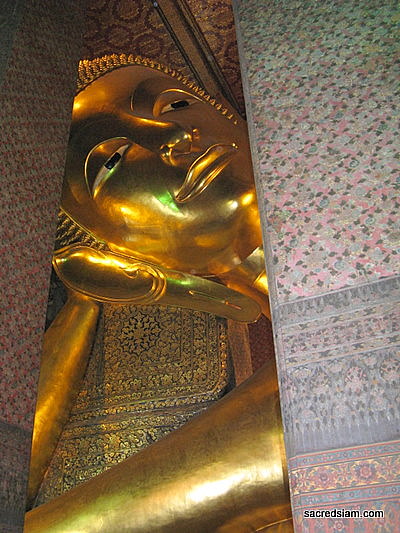
Wat Pho Reclining Buddha.
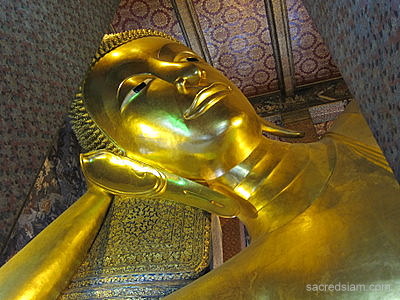
Wat Pho Reclining Buddha.
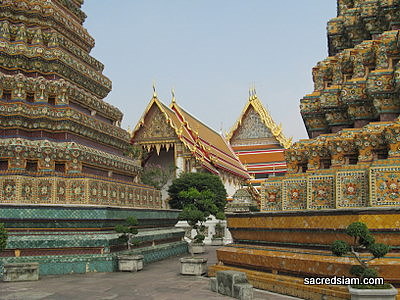
Wat Pho chedis.
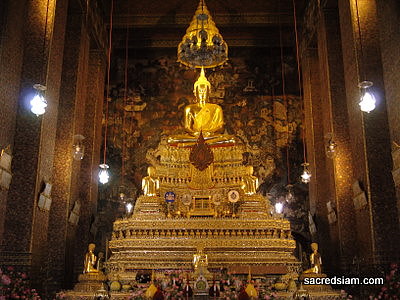
Wat Pho Phra Buddha Deva Patimakorn statue.
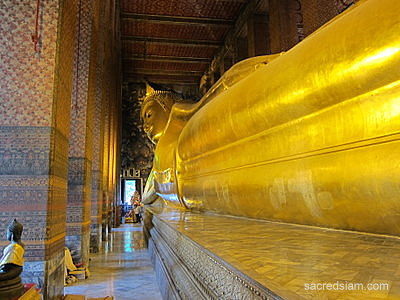
Wat Pho Reclining Buddha.
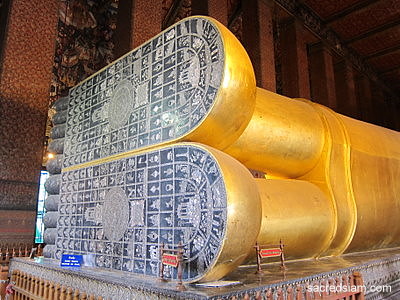
Wat Pho ornamented soles of the Reclining Buddha's feet.
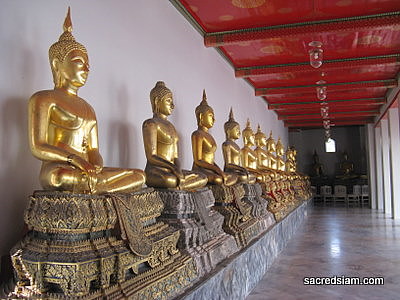
Wat Pho Buddha images.
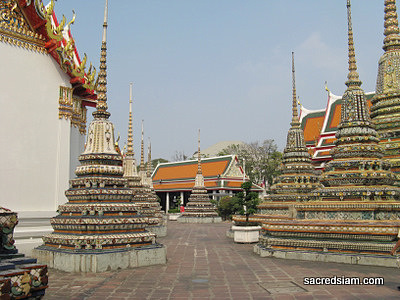
Wat Pho chedis.
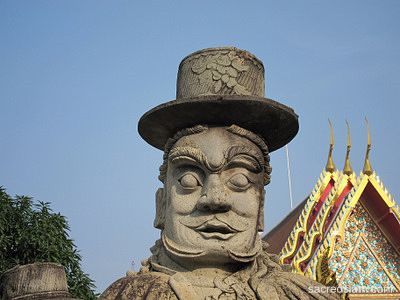
Wat Pho rock giant representing Marco Polo.
MORE PHOTOS









